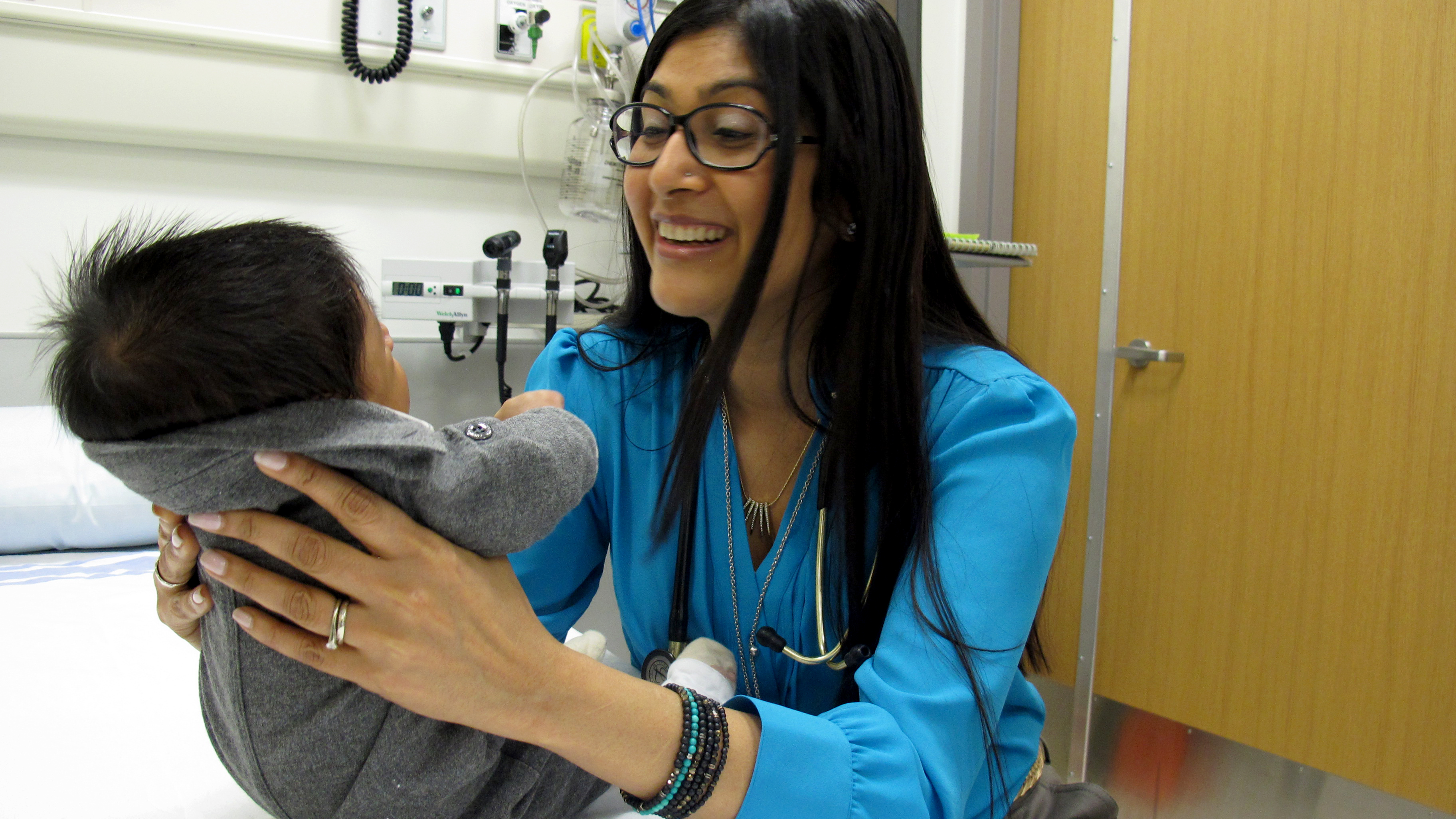
Samina Ali examines a young patient
Are Alberta emergency departments effectively treating pain in pediatrics patients? In a recent Paediatrics & Child Health article, Samina Ali has shown that pediatric patients across the province are being undertreated for pain.
Ali, a pediatrician and assistant dean of professionalism in the Faculty of Medicine & Dentistry, led a survey of 108 emergency rooms in Alberta to gauge how they treat pediatric pain.
There were 72 responses, including two pediatric-specific emergency departments. Only 71 per cent of respondents used a pain measurement tool and only 54 per cent reported that pain was documented in at least half of pediatric patients. Less than one-third reported having a policy to document pediatric pain.
The survey also revealed that standards of pain treatment are inconsistent across Alberta: local skin-numbing anesthetic was applied prior to inserting 70 per cent of IVs and 30 per cent of spinal taps, a procedure to draw cerebrospinal fluid from the spine for testing. The American Academy of Pediatrics (AAP) recommends local anesthetic should be used every time in both instances.
The AAP recommends using sugar water to treat pain in children under six-months old, as it helps release natural opioids produced in the body. Despite the evidence that this is a safe, effective practice, it was used in less than five per cent of procedures like urinary catheterization and spinal taps.
Children with broken femurs-the body's largest bone-were treated with IV opioids in only 65 per cent of cases, whereas 23 per cent were treated with ibuprofen and 26 per cent were treated with acetaminophen, a mild analgesic.
"Given the severe pain associated with this injury, one would expect almost universal use of opioids," Ali wrote in the article.
The survey was important, says Ali, in determining why pediatric pain is not treated as often or as thoroughly as older patients. "Our team wanted to understand the barriers to optimal pain treatment, as well as the needs of the emergency community, before beginning our prospective trials and knowledge translation work," she says. "The most common reported barrier to adequate pediatric analgesia was a lack of education and, accordingly, Alberta administrators expressed a desire for more pain management education."
This research is being built upon with two correlated studies currently underway to gauge how pain killers are being utilized in pediatric patients. One is looking at use of oxycodone and the other is comparing use of oral morphine versus ibuprofen. Both studies are funded by Canadian Institutes of Health Research (CIHR).
Ali suggests that there is a "likely knowledge-to-practice gap" for providing pain relief in pediatric patients; the survey showed that one of the most commonly reported barriers was lack of education, with inexperience with the situation and staffing issues taking second and third, respectively. Continuing medical education and new pain management policies were the highest reported desired changes and required resources among participating emergency departments.
Because most children are treated outside of pediatric clinics, Ali emphasizes that pediatricians should engage emergency room administration and community medical leaders to help disseminate knowledge. She cites Translating Emergency Knowledge for Kids (TREKK) as an example of ways to help this happen.
"Eighty per cent of Alberta's children are seen in general hospitals but make up the minority patient base of virtually all of these sites," Ali says. "It is very challenging to be at the 'cutting edge' of everything."